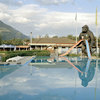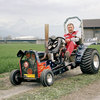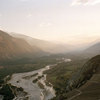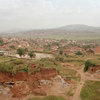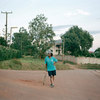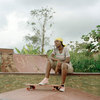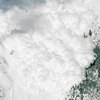A Conversation with Yann Gross
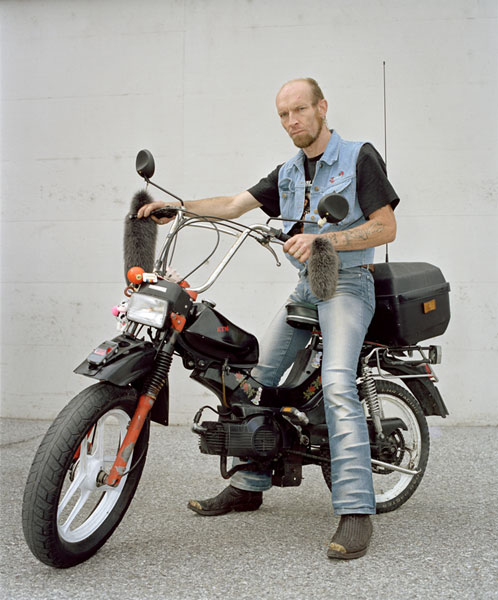
Yann Gross is one of the two winners of this year’s Hyères Photography Festival. In this conversation, Yann and I talk about the background of his work.
Jörg Colberg: You open your piece on Kitintale saying “I mostly focus my work on identities, dreams and senses of belonging to communities.” Can you expand this a little bit? What in particular interests you in communities? And what makes photography a particularly good way to explore this?
Yann Gross: Almost everybody wants to belong to a group or a family and share their daily life activities/experiences. To define their own identities is important for every human being and to be part of a community is universal, some are virtual (Facebook for example) and some are real.
I’m interested how people interact and behave in a group, the use of symbols or dress codes.
I grew up in a small village, and didn’t speak the language when I was very young. Kids spoke French (the local language) at school, and my parents were speaking German at home. Moreover, my parents were newcomers in the village and they didn’t know many people there. I lived in a quite conservative countryside village… Families had known each others for ages, and they were not very open minded. So I had to learn how to enter groups, and I observed the behaviour and codes of communities since my childhood. I was always fascinated by the phenomenon.
I’m curious by nature and when I started to take pictures, I realized how much easier it was to interact with people I didn’t know because of a camera. It’s a good pretext to meet people: the reaction is very different when I ask somebody for a picture or a cigarette. So photography is a tool that permits me to discover what surrounds me and to interact with people.
Moreover, it is important for me to get to know people, in order to insert part of their stories into my pictures.
JC: When did you start to take photographs then? And have you always been conscious about how it connects back to your particular situation as an outsider of sorts in that small village?
YG: When I look and think through a camera I am an outsider (even in my own group), and since I was quite used to be in this kind of situation as child, it maybe helped me to observe my environment that way.
But I haven’t always been conscious about this: I started to take a lot of pictures when I was in high school. I found an old mechanical camera in a drawer at home and wanted to learn how to use it. I went to the photography course at noon. And since I was the only one interested in that course, they just gave me the keys of the darkroom. It was just fun to take pictures and see the process. At that time I didn’t think too much about series and the rest.
Then, I went to art school because I wanted to learn more about media, but in school I had to work on a lot on exercises (from still life to fashion photography). I didn’t have time to develop a real research or long-term project. But I started to photograph in my village during the weekends, and I could interact with people I had never spoken with before.
JC: “Horizonville” portrays a valley in Switzerland where the population is attached to ideas of America that actually have very little to do with the actual America. How did you discover the area? And how did you go about photographing the valley and its people?
YG : Well, the valley was located near my hometown, and the area is one of the most touristic place in Switzerland, a lot a famous ski resorts are located there.
But nobody ever stops in the valley: there’s a highway passing through it, and people leave it only to reach one of those ski resorts. The valley is made of industrial buildings, orchards, fields and gravel pits. There isn’t any big city around, and most people living there are working class.
At the time I had no money, but I wanted to travel. I had heard rumours about the area, so I decided to explore it by means of a road trip on a moped. I bought a milk trailer where I could put my camping and photographic gear and started my own Route 66 near my home for three months. The means of transport was an important point: since it was very slow (25km/h [15 miles/hour]), the perception changed, everything looked bigger, and it allowed me to explore some hidden places in orchards or industrial areas, where I could find a lot of interesting stories. It was also fun to tell my road story to the people I wanted to photograph, so we both lived in a bit out of “the real world”.
I wanted to recreate the dream world the people I photographed were living in. Most of them had never been to America and don’t even speak English. When people can’t travel, they create their universe from what they can see in movies or on TV. Sometimes, they use exotic symbols (totems, redneck flags, tattoos), even if they don’t understand them, just to be different. On the other hand, it wasn’t possible to get totally rid off the Swiss culture, so there are often details in the pictures that remind us where everything is.
Horizonville is the name of a gas station I passed by, and it became a perfect title for my series: an unreachable area that doesn’t exist in reality.
JC: It’s funny that you actually ended up doing a road trip - a very American thing to do - through an area where everybody just loves America. And going slow and interacting with the people seems to be part of how you approach projects in general. This must require a lot of patience - and confidence - to know that eventually you will get the images you’re after?
YG: My idea was to act as an American (the way I imagine it, since I have never been to the US). I saw David Lynch’s movie “A Straight Story” and thought “If an old man can drive across two states on a lawn mower, I can do it where I live”. As a Swiss, everything coming from the US seems to be big, so I tried to play with the idea of scale. The distance from the starting to the end point was only 100 km [62 miles], nothing compared to most American states, but I had a very slow means of transportation, and I didn’t take any straight path in order to make a long road trip and transform my reality into something bigger.
Actually, the pictures I made don’t reflect the daily life of most inhabitants. I decided to work on a territory and explore it specifically. That was the fun part of the road trip: looking for unattractive places to see what is hidden behind them.
But in the end, my experiences are almost more important than the results (the pictures), and when I work on a project I like to collaborate with people. That way I can get the pictures I want. I love pictures, but I don’t want to stress out about them: if in my own life I was just thinking about photography that would be a very sad. What would the motivation of my everyday life be? To get up and to make a nice picture in order to get famous or to sell it? I’d rather spend my time doing something else, like being a human cannonball.
For example, I’ve been working on an avalanche project for six years, and I have only been able to take 7 pictures I am happy with so far. But every trip to the mountains is great, even if the pictures don’t come out good.
So yes, sometimes patience makes the difference. My eyes and ideas are sharper when I’m used to my environment and when I have to search a bit deeper. And I like trying to push my limits a bit further all the time.
JC: I see a strong focus on visual story-telling in your work, and I’m wondering how important stories are for you? And when you work on a project, how do you go about it - do you start out with a general idea, or do you have images in mind and try to find them?
YG: I love telling stories and maybe I’ll make movies in the future. It’s both, sometimes a long process: Usually I first explore the area and meet people. I think about what I saw and experienced. This way, I can get rid off my prejudices or any other exotic fascinations. Only then do I start to photograph. After this first step, I imagine images or situations and try to create or find them. For example in Uganda, I first spent two months in the suburb without taking a picture.
Though my pictures aren’t staged and I never asked anybody to wear something special or play a fake situation, I often choose the background and the light. I rarely make snapshots.
JC: If I remember correctly, in Hyeres you told me that when you were in Africa you tried to create photography that showed the continent in a different light - something different from the endless displays of poverty, war and famine. Can you expand this a little bit?
YG: I went to several African countries, and my personal experience doesn’t reflect the usual pictures I see about this continent. I don’t want to minimize those crises (and I could see and live some of these aspects), but I definitely think there are other stories that need to be told. Daily life exists like anywhere else, including hopes, dreams, tears, problems and happiness.
It also makes me nervous when I hear and see (very famous) photographers spending a few days in a refugee camp, taking pictures of the victims (without talking to them) and then leaving. For me that’s a disrespectful and neo-colonialistic behaviour. People want photography to be spectacular, and this is probably what most photographers are looking for when they go to Africa. They want to show something that doesn’t exist in our Western world, another
reality.
Everyone has their own motivation, but what I want to say is that there isn’t only one reality. The continent is much more complex and interesting than the pictures we are used to seeing.
JC: What do you suggest photographer who want to portray Africa do instead? And do you plan to go back to spend more time - and produce more work - in Africa?
YG: I would like to see less prejudices, and I would like people to consider it just like any other place in the world. Try to ask yourself how local people will react to your work instead of someone in Europe who never went to Africa.
My favorite photographers are Malik Sidibé and David Goldblatt, probably because they don’t have a different approach. They don’t take pictures in order to have them published in a famous magazine or to have a show in a museum. They have been taking pictures in their environments for ages in a very clever way.
I’m looking forward to seeing more work by Africans photographers, they will probably produce very interesting series.
And yes, I’ll go back to Uganda this Summer because I miss the skaters. They will try to re-fix the mini ramp, and I would love to be there. On my journeys, I always meet new people who are very inspiring. Maybe I’ll continue to produce more work there. Time will tell.
 By
By 

